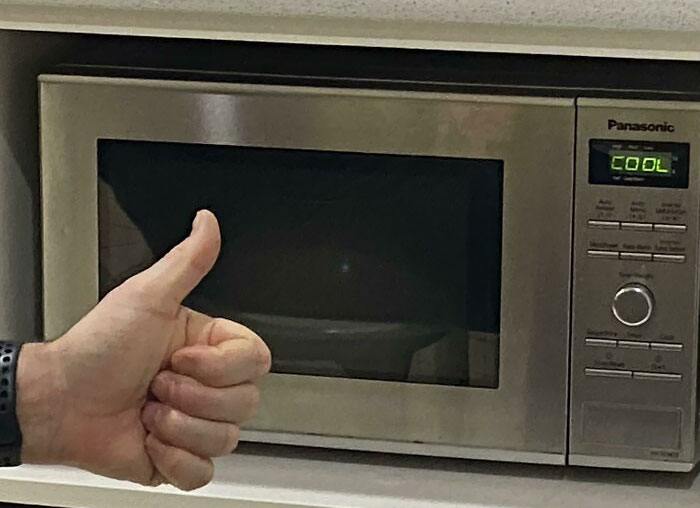Priorities.
How dare you!
We also measure our drugs that way
And our largest bottles of soda.
Like a goddamn liter cola
Literally all of your food and drinks in America are sold by the metric unit. That’s why it is on the packaging. Your “fifth” of vodka is actually 750ml and is not 1/5 of a gallon.
And alcohol!
And my axe!
And my Glock!
Glock is Austrian. They just love the US market.
I think most gun makers like the American market
And my crippling medical debt.
And alcohol!
Really? And here I thought it was still in those really confusing Florida ounces. Even up here in Canada, where we do have millilitres marked on our cans, I still see “Fl oz” on many products.
deleted by creator
When I buy a handle, I don’t know how many ounces are in it, just that there’s 1.75L in it.
That’s done intentionally to obfuscate the quantity, since most Americans can more easily estimate a half-gallon. It’s to encourage consumption.
Doubt intensifies
Sorry, but the entire u.s. economy is actually run on this kind of scam logic. Honest people are run out or killed a few years in. Like with cops. It’s in the college textbooks, but naturally none of the news channels can cover the details at any length, due to conflict of interest in funding.
The US food industry is based on bulk size as a reason to spend more. We buy in bulk and all of the large stuff is “value sizes”. They wouldn’t obfuscate the size of their soda to make it seem like you were getting a smaller amount.
And some science stuff. Often related to drugs.
And computing.
And distances in track and field events
This is why i use the amertric system
It 318 kft not 60 mi or 100 km. That avalanche was 1 decaempire State building in volume. 1 mi is actually 2.28 kft.
We use it for drugs thank you very much.
Ignore all the rest of the US rounds like .30-06, .30-30, .357, etc.
And let’s not get started on .338 lapua magnum.
A bastard child of both American and British measurements, ending up being made by a metric manufacturer.
Designed first by Americans, who took a Finnish round and tried to tweak it, who also tried to get the Finns to produce it, then the Americans basically ran out of money and gave up, then the Brits took over the development, and continued producing them all in Finland…
… I … think.
The story of how the Lapua came to be is a clusterfuck mess.
It’s like that because everyone else measures them that way, and capitalism. It’s not even because it’s a better system, it’s because money.
And the only time they use the proper date format is their national holiday.
If you mean dd-mm-yyyy instead of mm-dd-yyyy, I’d agree it’s superior. That said, other countries have us both with their fully ISO compliant yyyy-mm-dd standard.
I prefer yyyymmddhhmmss.
Best for record keeping.
The US date format makes sense in the US. In a culture where days blur together endlessly in an endless slog of creating value for shareholders, the month is more important information than the day.
Which one? There are many national holidays.
Who certifies the “proper” format? Im fairly sure it isnt dd-mm-yy
M’erican here. My workshop is 100% metric. I do far too much measuring, designing and planning to fuck around with inches, feet and football fields. Motherfuck the imperial system. America has been robbed of the superior until of measurement. Every last bit of my work is in millimeters and it will be that way until I die in a horrible firey accident in my shop because beer and dangerous power tools are just too much fun when taken together.
But iirc Boeing mainly used US customary? Does it somehow not cause any trouble in the industry but it’s problematic in smaller workshops? Genuine question
The only thing I will hand to the imperial system is how it uses inches. Then again that’s really a part of the system but of its practical use.
What I like is the use of parts of inches. Especially the fractions which are powers of two. Very useful. That’s a little difficult with the cm and mm because they’re already so small. And a dm is quite large on the other hand.
I know my uncle uses inches to make flutes e.g. Supposedly helps with getting things lined up and accurate to tune. I dunno. But yeah. Otherwise, metric ftw.
What I like is the use of parts of inches. Especially the fractions which are powers of two. Very useful. That’s a little difficult with the cm and mm because they’re already so small.
What? With millimeters you barely have to use fractions because it is so small, how is that a negative? Fractions are also way harder to understand if you need to het precise
Fractions are also way harder to understand if you need to [g]et precise
Not gonna lie, if you are working with carpentry or sewing or similar construction or creative work, you probably shouldn’t have any issues with fractions…
Just try adding 1/3 and 5/8. In my field fractions like that are nowhere near precise enough anyways, so you’d need to work with thousands of inches, which just makes you wish there was a smaller unit like millimeters
Just try adding 1/3 and 5/8.
Cherry-picking fractions with prime numbers. 👍 Obviously no harder than using a readily available calculator just like any engineer would with the metric system. That’s fine too. You’d end up with a decimal answer, so then the benefit is lost, just as with fractions of cm.
In my field
Yup, say no more. I’m not saying inches are universally better. Only in certain situations.
I don’t see how cherry picking is an issue when that issue literally can’t happen when you’re working with fractions, I also don’t think those sizes are particularly uncommon?
I don’t see how cherry picking is an issue
Cherry-picking is an issue when you’re trying to make an argument because you’re choosing a very complicated case on purpose when the more common cases are less complicated. That’s gotta be a straw man argument or something similar? I dunno.
literally can’t happen when you’re working with fractions
Did you mean to say something other than fractions here? If not, I’m confused.
don’t think those sizes are particularly uncommon?
It depends if you are making your own shit or not. You can always decide on other sizes, I guess? But no, they’re not uncommon. But combined, maybe not as common as other combinations? Either way, like I said, the easier cases still make the case for a slightly larger base like the inch. The other cases you can just use cm/mm or a calculator if it’s too much.
Just to be clear, this has nothing to do with the imperial system itself. It’s only the fact that the inch is a more comfortable size. You could easily just use a base of 2 cm or something and use fractions of that. But common measuring devices rarely mark even fractions of cm. That’s the only issue.
You’ve already gotten two real world uses here.
I’m not saying millimeters are a negative. Never did I say that. But I will say a base 10 doesn’t have that many prime factors, so using measurement equipment where halves and thirds and smaller marked out can be pretty helpful. Metric measuring stuff never has that.
I’m just saying that if you are working with some kind of base size, and want to do stuff in fractions or multiple of that base size, the inch is a pretty good size. 👍
I’m from and in Europe, and I don’t use inches myself. But there are obviously good uses for it.
I’m just saying that if you are working with some kind of base size, and want to do stuff in fractions or multiple of that base size, the inch is a pretty good size. 👍
I have a hard time understanding why you would prefer that over using decimal places to be honest, adding decimal places together is much simpler than different fractions
adding decimal places together is much simpler than different fractions
That’s just because you have less practice with the latter. 👍 There are tricks. 😉
Not flute working but sewing, and I know it sounds insane, but mm is just to small to be practical. It’s one or two strands of tread whereas 1/4 or even 1/8 gives a proper piece to cut of.
And 1/4 inch seem allowance is just so much less bulky than the standard 0,75 cm, and so much more intuitive for me to work with … and f. I just realized that all my arguments for using inches are based on habits…
Even though I’m european I never really applied cm in anything but homework and therefore never got a real sense of it. And a lot of the nice sewing patterns are in inches so that’s where i started.
Well habits are valid and in the end a cm is just as arbitrary as an inch, but converting between units is just objectively easier with metric
Well you know, first things first.
And by “Americans” you mean the companies that manufacture the firearms, right? Or whatever body, if any, that controls what size ammunition cartridges are measured by?
Both are used. If you see caliber after the number it’s in 100 of an inch. If you see mm it’s metric. (Though caliber refers to barrel diameter and can be expressed in imperial or metric). So a 45 caliber is 0.45 inches or about 11.5mm.
NATO has standardised on a few round types so they can share supplies between countries. The NATO 7.62×51mm round is very similar to the .308 and they can usually be interchanged.
And when not, kablammo?!
You can fire .223 in a firearm rated for 5.56mm pressure
.308 is the opposite. It has more pressure than 7.62mm
Most any new barrel is going to be rated for both pressures now a days, but always good to doublecheck!
We all use metric. We need to just rip the bandaid off.
.223: Proper American rifle round.
5.56: Communist European rifle round.
5.56 puts out slightly higher pressures. I used to have a bolt action .223 rifle that wasn’t rated for 5.56. I sold it to an old guy in the country who was going to use it to kill coyotes stalking his chickens and small livestock.
I was gonna say similar, minus the coyote shooting. Well, kinda.
and drugs
And the druggies. Somehow, they had no trouble switching to metric.
Also wetsuits…? 🤷♀️








